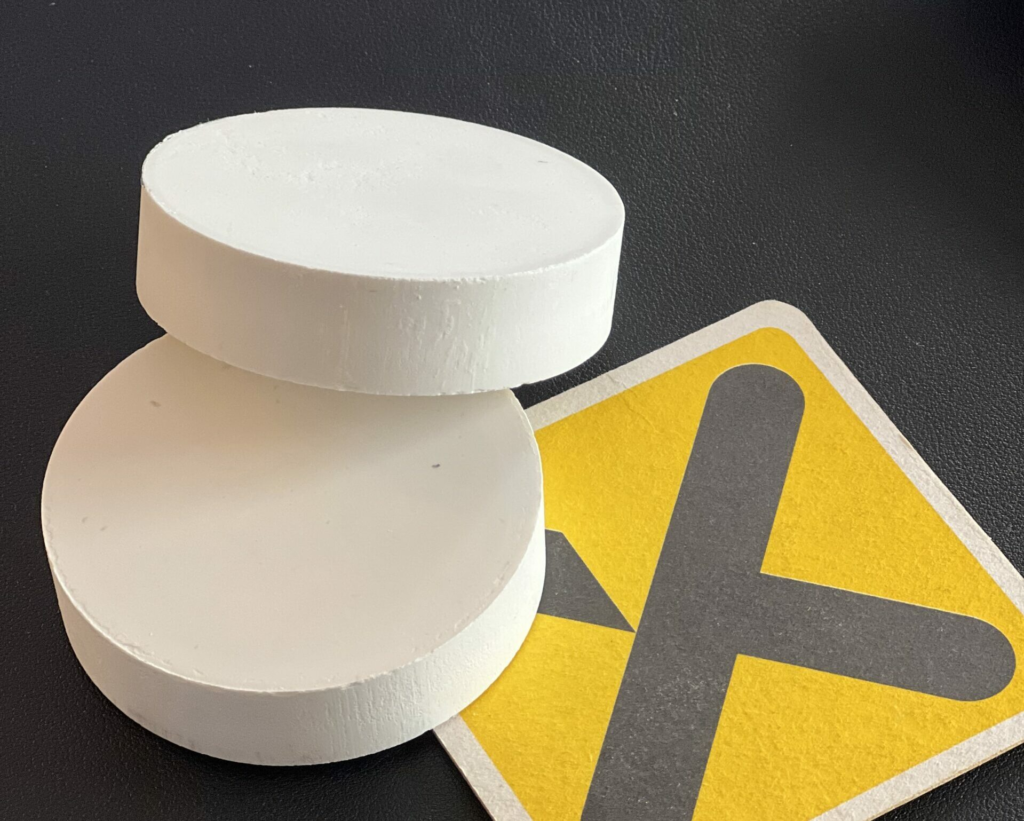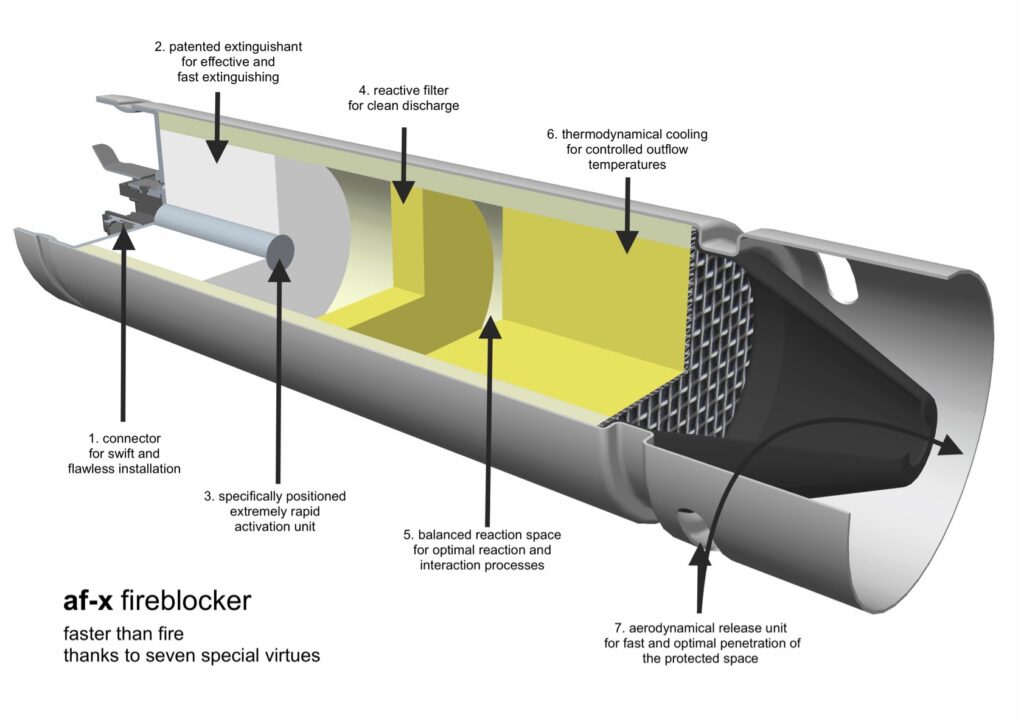
AF-X Fireblocker
Environmentally friendly fire extinguishing system


Aerosol fire extinguishing system
How does an aerosol extinguishing agent work?
AF-X Fireblocker generators have an extinguishing agent which is a solid aerosol-forming compound (see picture) in a non-pressurized generator. The aerosol is self-generated by a combustion process of the solid aerosol-forming compound, activated by an electrical ignitor.
The AF-X Fireblockers have a connector for the electrical control and activation mechanism of the extinguishing generators.
There is a grid on the outflow side for the gradual distribution of the extinguishing aerosol. The aerosol fire extinguishers can be activated automatically by means of thermal or smoke detection, but also manually.
The chemical transformation of the solid extinguishing compound is initiated by means of an electrical impulse.
Once activated, the solid compound is transformed into a rapidly expanding extinguishing aerosol which, after having passed a cooling section, exits through the outflow opening of the fire extinguisher and extinguishes the fire in the protected area.
Extinguishing principle
The aerosol generated by the Aerosol Fire Extinguishers and Fire Extinguishing Systems does not extinguish fires by using the methods of suffocation (oxygen removal) or cooling, but by stopping the combustion reaction on a molecular basis (by binding free radicals) without affecting the oxygen levels.
The aerosol is made of micro-sized particles. These particles are suspended in a gas, whereby the ratio between the exposed surface and the reaction mass is extremely high (so that the amount of active material required for quenching can be kept to a minimum).
Particles of these dimensions remain in suspension for a relatively long time, allowing them to flow into the natural convection flows. This leads to an increase in the effectiveness of the extinguishing agent.
Extinguishing action
Aerosol fire extinguishers and fire extinguishing systems produce an extinguishing aerosol by a chemical chain reaction without affecting the oxygen levels in the environment. The extinguishing effect is triggered by two actions (Physical & Chemical)

Physical action
The physical extinguishing action arises from the chemical-physical characteristics. Compared to all other elements, these elements require the least amount of energy for ionization (lowest ionization voltage).
For this reason and because only a very small amount of energy is required, it is possible to separate the electrons from the atoms. The required amount of energy is provided by the abundance of energy present in the fire.
The ionization of potassium is evidenced by a light violet discolouration of the flame during extinguishing. The energy present in the flame is therefore reduced in accordance with the ionization voltage of the elements present.
Chemical action
During combustion, certain reactions take place in the flame in rapid succession between atoms and fragments of unstable molecules (radicals). Such reactions form the so-called chain reactions of radicals. Due to their unstable nature, radicals tend to reach a stable end state through even more reactions.
The stable end products include carbon dioxide (C2O) and water (H2O). The potassium released by the breakdown of the potassium compounds reacts during combustion with the free radicals of unstable hydroxides to form potassium hydroxide (KOH), which is a very stable compound. Due to the presence of CO2, the KOH disintegrates into K2CO3. K2CO3 is a stable white substance that is not corrosive and poses no danger to humans or animals.
At this stage, the free radical chain reaction is stopped and the flame extinguished.
